Find the pages, products, documents, and resources with a full site search.
Advanced Document SearchMaximum Equipment Availability

Availability, reliability and readiness are crucial in such a demanding and time-sensitive industry. Present in almost every petroleum corporation, Sponge-Jet offers the only clean, dry, low dust and rebound abrasive blasting technology. The technology is used:
- During operations
- Adjacent to critical equipment
- To increase efficiency on routine and major maintenance operations
- For maximum coating life
- To increase tank and storage availability
- In order to maximize boiler efficiency
- As a repair to Corrosion Under Insulation (CUI)
Eliminate almost every harmful aspect associated with surface preparation and reduce the steps of cleaning and profiling prior to coating.
Features & Benefits
- Asset life extension
- Increase tank & storage availability
- Extend time between shut downs
- Minimize liability & regulatory issues
- Protect integrity & reliability of assets
- Improve worker health & safety

175,000 m² (1.9 million ft²) of pipes, valves and tanks at PDVSA Refineries, platforms and FPSO’s were prepared with Silver 30 Sponge Media™ abrasive prior to coating.

Preparation for recoating tank exteriors, like these successfully blasted sulfuric acid tanks, are perfect for Sponge-Jet because contractors can blast near pumps, valves, rotating equipment without damage or grit-intrusion common to ordinary abrasive technologies

Electronic malfunctions from ordinary abrasive blasting in this Chevron water softener and treatment plant prompted the use of low dust, low rebound Silver Sponge Media™ abrasives

The Bahamas’ Port Authority, which prohibits open abrasive blasting, specially permitted Grand Bahamas Shipyard to Sponge Blast a rudder blade, rudder horn and other areas in “afloat” conditions; Sponge Blasting in blast-prohibited locations is commonplace.

Sponge-Jet exceeds expectations in comparison to ordinary abrasive blasting at Travieso Tank farm (Venezuela); PDVS maintenance personnel reported that Sponge Media™ blasting off tar and preparing the first internal ring for paint was completed faster than had been done with ordinary abrasives.
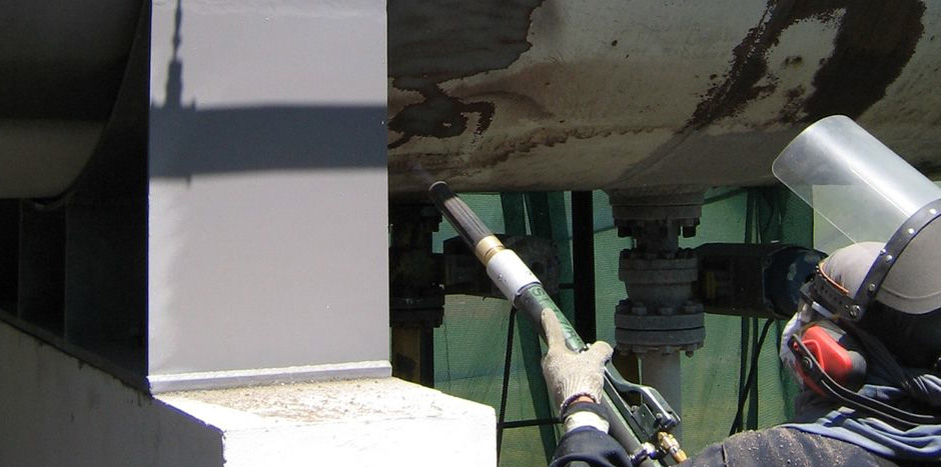
Facility personnel needed repairs done quickly and to multiple, charged LP gas tanks and pipes; Sponge-Jet high-visibility blasting, with no need for retouching, was chosen and used to accelerate maintenance operations.

Sponge-Jet allows for safe, controllable remote access blasting and made the removal of metalized coating from this PETROBRAS FPSO Turret less invasive (with other nearby maintenance crews working uninterrupted) and less costly – with more simplistic scaffolding and breathable, fabric windscreen for containment.

Sponge-Jet saves 20km (12.5mi) of pipeline by allowing installation adjacent to a residential bridge; it was especially successful because Sponge-Jet’s low dust process stopped contamination of the river and to surrounding villages.
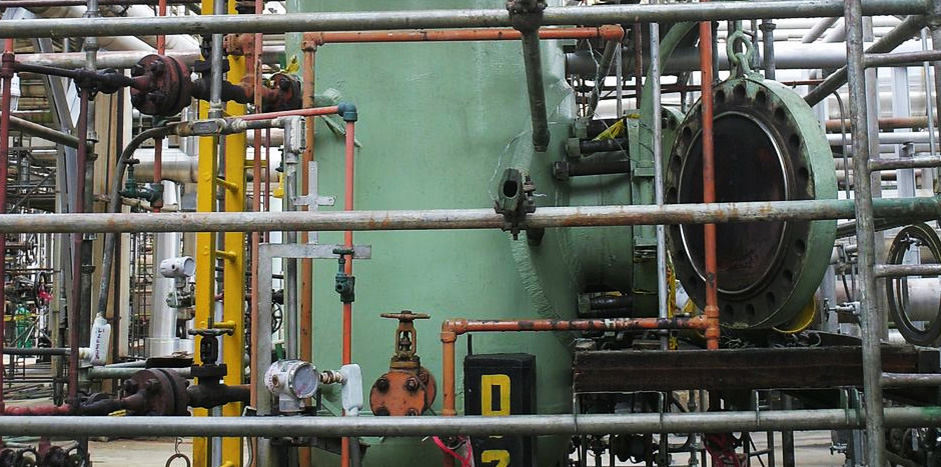
Coating and corrosion removal on three hydrogen tank interiors under critical shutdown schedule in Ecopetrol’s Unibon Plant (Colombia); Sponge-Jet replaces hand-tools in a 36-hour blast and paint restoration project.
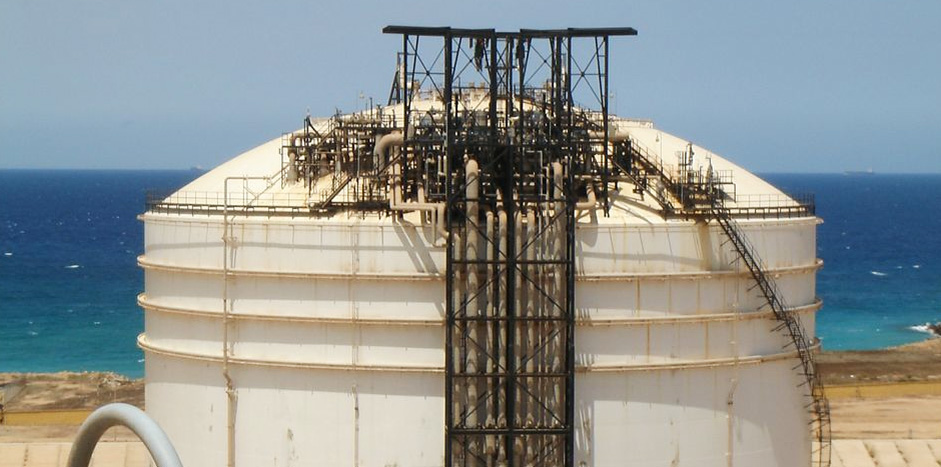
Coating maintenance on an ocean-side propane tank (France); in tight, confined blasting near pipes and valves made low rebound Sponge Media™ blasting the only consideration.
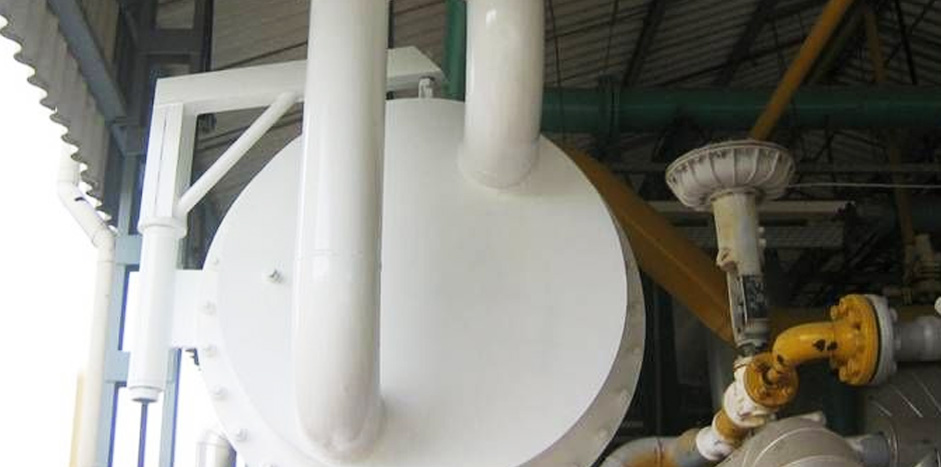
Condenser coating repairs at YPF liquid gas plant (Buenos Aires, Argentina); Sponge-Jet achieved the Sa3 (SSPC SP-5 / NACE 1), White Metal Blast Cleaning without shutdown on charged chemical and fuel lines.

Sponge-Jet can clean oil residue from multiple surfaces with no added water or detergent… like on this Pemex LPG tank’s where the burner overcharged and spewed crude oil, contaminating the main storage tank and other surfaces.

High mobility is the key to success regarding the coating maintenance of gas outlet stations like this one in France; Sponge-Jet is recyclable… in this case seven times, reducing consumption to 2.8k/m²(1lb/ft²) as well as the costs for handling, transport and disposal.

Contractor removes corrosion - prepares 1.680m² (18,083 ft²) in-service refrigeration tower piping, flanges and joints without halting operations at Petrobras’ Landulfo Alves refinery.

Sponge-Jet exceeds expectations in comparison to ordinary abrasive blasting at Travieso Tank farm (Venezuela); PDVSA maintenance personnel were able to schedule multiple activities during blasting; they scheduled multiple blasters in the same proximity, which yielded faster production compared to ordinary abrasives.

Sponge-Jet and a pipe pig are used to dry clean refinery process pipe interiors in the world’s first "sustainable commissioning"; the process is saving millions of liters of water and millions of dollars by not using water and thus reducing water transportation, processing and treatment requirements.
Sponge-Jetin resurssikeskus
Resources
Blogi
Recent Blog Posts

How Sponge-Jet Helped Restore Paris's Grand Palais for the 2024 Olympics
Every four years, billions of people from all around the globe unite to watch the Olympic Games.Hosted in renowned cities worldwide, this year’s Olympic Games will be held in Paris, France. They have only been held in Paris, France twice before - in 1900 and 1924. Now, 100 years later, Paris will once again become the world stage for these iconic games.Lue lisää >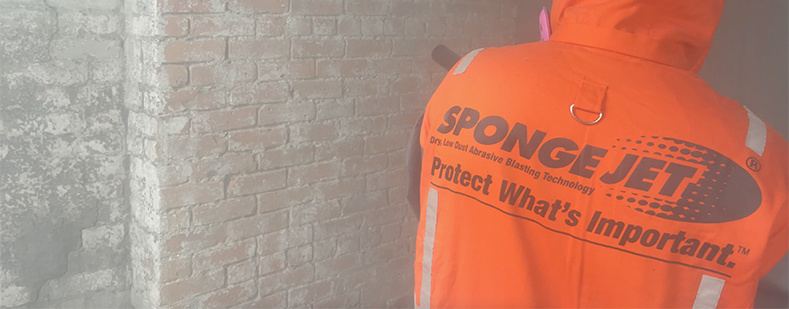
How do Contractors Use Sponge-Jet for Abatement Work?
Jobs that are characterized as "abatement projects" typically involve the removal of hazardous materials from the surface. These types of projects are often found in places like industrial shipyards, factories, tanks, water treatment plants, mill buildings, and generally any building or structure built before 1980.
Lue lisää >
